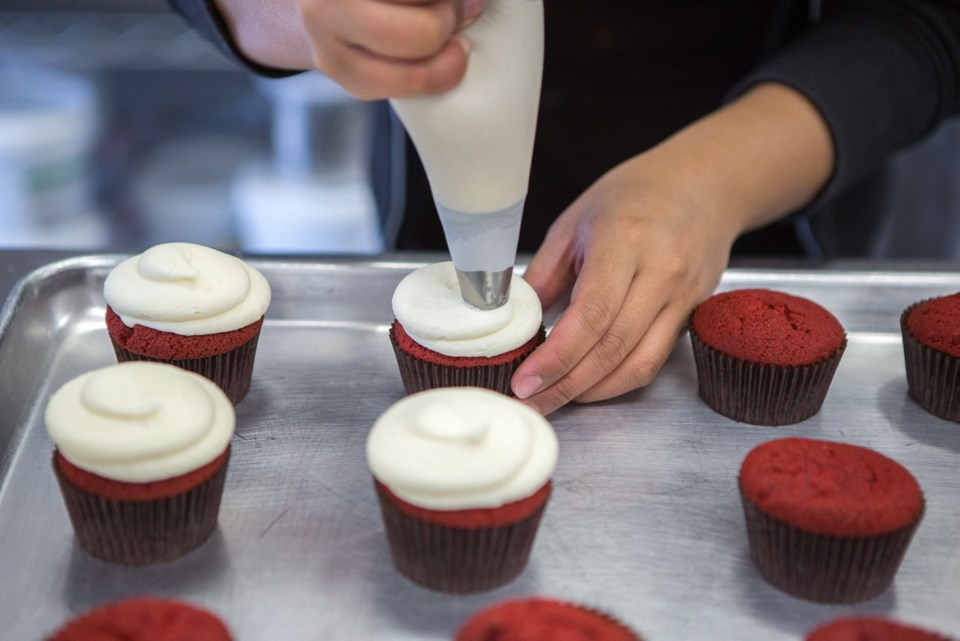TORONTO ŌĆö Prepare to shell out a little more for the sweet treats of spring and summer as a global surge in the price of vanilla makes its impact at some small-batch ice cream shops and neighbourhood bakeries.
The cost of the foodie staple has been on the rise for years, but is now starting to really be felt on retail shelves and mom-and-pop eateries that pride themselves on natural ingredients, say observers.
That includes Toronto cupcake master Verge Manuel, who says the hike is exacerbating various financial pressures on his two gourmet shops, called Dlish.
ŌĆ£There are certain forces that we have no control over which is the pricing of certain ingredients that we have to obviously pass along at some point because you canŌĆÖt absorb it anymore,ŌĆØ says Manuel, whose brand revolves around the use of real Madagascar vanilla.
ŌĆ£One of the rising costs is vanilla, absolutely.ŌĆØ
When Dlish started seven years ago, Manuel says vanilla prices generally increased 10 per cent a year. But two years ago, it doubled for him, and last year it went up five-fold.
Vanilla prices are the highest theyŌĆÖve ever been, says David van der Walde, director of Montreal-based vanilla importing company Aust & Hachmann Canada.
He says the wholesale price now runs as high as $850 per kilogram for premium beans ŌĆö a 10 per cent increase from last year, which was 30 per cent more than the year before that.
Five years ago, you could get vanilla for as little as $20 US per kilogram, adds van der Walde, calling that price ŌĆ£excruciatingly low.ŌĆØ
It rose quickly as consumers began demanding natural ingredients in everything from chocolates to cakes to yogurt.
So big food companies responded, with HersheyŌĆÖs among the power players that announced a switch to real vanilla in 2015 for their chocolate bars.
Meanwhile, increased demand coincided with shrinking supplies, says van der Walde, noting that less-established plantations outside of Madagascar gave up on the labour-intensive crop because prices were low.
ŌĆ£And then the price starts to go up again,ŌĆØ he says.
Things only got worse in March 2017 when a cyclone hit Madagascar, the worldŌĆÖs leading producer of vanilla, destroying a good portion of its output for 2018.
Since then, ice cream maker Cyril Chalykoff says he can barely secure enough of the richly flavoured beans to keep production going.
ŌĆ£WeŌĆÖre getting to the point now where itŌĆÖs getting very, very, short supply,ŌĆØ says Chalykoff, president of London Ice Cream based in London, Ont.
ŌĆ£WeŌĆÖre just scrambling. WeŌĆÖre scrambling.ŌĆØ
Vanilla is pretty much synonymous with ice cream, he adds, scoffing at the possibility of dropping the flavour from his menu.
ŌĆ£ThatŌĆÖs like saying to a 91įŁ┤┤: ŌĆśYou canŌĆÖt have coffee anymore.ŌĆÖ ŌĆØ
For now, heŌĆÖs absorbing the cost, but with margins shrinking, he admits heŌĆÖs weighed the pros and cons of charging more.
ŌĆ£ItŌĆÖs unfortunate because a lot of people donŌĆÖt really recognize the difference between one vanilla to the next, and you really get lumped in with [other] vanilla ice cream,ŌĆØ he says.
ŌĆ£If we go up in our pricing a little bit then some customers wonŌĆÖt appreciate that, wonŌĆÖt understand it.ŌĆØ
Even the big companies feel the impact, such as Nestl├® Canada and its naturally flavoured Real Dairy brand.
Catherine OŌĆÖBrien, senior vice- president of corporate affairs, says in an email there are no plans to raise ice cream prices, but they are ŌĆ£continually managing ingredient and commodity costs across all of our product portfolios.ŌĆØ
Smaller players are undoubtedly struggling, van der Walde says.
ŌĆ£We sell vanilla beans directly to small ice cream shops here in Montreal who use them and theyŌĆÖre freaking out over the prices.ŌĆØ
Michelle Chow, president of the Vanilla Food Company, says she hears the same concerns from her ice cream clients, who tell her they expect to raise prices to keep pace.
ChowŌĆÖs online store sells to home bakers and commercial kitchens, with varied vanilla clients including soap makers, tea sellers and breweries.
She says many have had to switch from whole beans or ground powder to more affordable options, such as extract or vanilla paste. But those, too, have gone up in price.
ŌĆ£We kind of just changed a little of our focus to chocolate-supplying versus the vanilla so that our company can sustain as well,ŌĆØ says Chow, based in Markham, Ont.
Chow admits she even finds herself rationing the product at home when she bakes with her kids.
ŌĆ£Before it was more like, ŌĆśOh, a splash of this,ŌĆÖ ŌĆØ she chuckles. ŌĆ£Now itŌĆÖs like ŌĆśNo, no, no!ŌĆÖ You measure it to a T.ŌĆØ
Chalykoff says his worst-case scenario would be to use vanillin, a common flavouring alternative that comes in natural and synthetic versions.
ŌĆ£Our main vanilla supplier, what theyŌĆÖre offering now is a blend; theyŌĆÖre cutting it with a vanillin-type thing, which is a compromise,ŌĆØ he says.
ŌĆ£WeŌĆÖre not at that point, yet. IŌĆÖll pay whatever IŌĆÖve got to pay but if itŌĆÖs not available, itŌĆÖs not available and what can you do, right?ŌĆØ
Van der Walde says supply is actually on the upswing, and that prices are plateauing. But not all suppliers stock up if they know clients will balk at the price.
As for this yearŌĆÖs Madagascar harvest, he says that runs May to August, but the beans ŌĆö which are actually the fruit of an orchid ŌĆö are harvested green, and need six months to prepare for export.
That means a fresh influx isnŌĆÖt expected before fall, with the best beans not expected until November or December, says van der Walde.
The market is driven by big industrial buyers like the flavour company McCormick ŌĆö not loyal customers of gourmet shops or grocery stores, he adds.
ŌĆ£They buy 80 per cent of the vanilla out there, so theyŌĆÖre the ones that determine how high the market can go,ŌĆØ says van der Walde.
ŌĆ£As long as theyŌĆÖre willing to pay $550 US or $600 US per kilogram, the market is happy to oblige them.ŌĆØ



